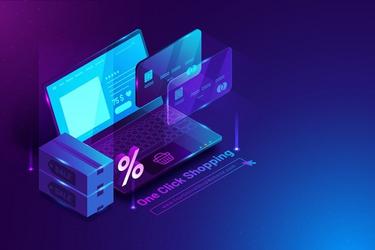Virtual assets as a payment instrument
Virtual assets[1], particularly cryptocurrencies[2], have significantly transformed the payment industry, offering an alternative to traditional financial systems[3]. This document delves into the utilization of virtual assets as a payment instrument, highlighting their operational mechanisms, benefits, challenges, and the evolving regulatory landscape[4].
- List of Key Facts
- Operational Mechanics
- Advantages
- Challenges
- Regulatory Landscape
- Virtual assets as a payment instrument
- The Rise of Virtual Assets
- Technological Foundations of Virtual Payments
- Advantages of Using Virtual Assets for Payments
- Regulatory and Legal Considerations
- Challenges and Limitations
- The Future of Payments: Integration and Innovation
- Case Studies: Virtual Assets in Action
- Navigating the Virtual Asset Payment Ecosystem
List of Key Facts
- Cryptocurrencies provide a decentralized payment system, eliminating the need for traditional banking intermediaries.
- Blockchain[5] technology underpins virtual assets, ensuring secure and transparent transactions.
- Virtual assets offer lower transaction fees compared to conventional payment systems.
- The volatility[6] of virtual asset prices poses risks for both merchants and consumers.
- Regulatory frameworks for virtual assets vary significantly across different jurisdictions.
Operational Mechanics
Virtual assets operate on blockchain technology, a decentralized ledger[7] that records all transactions across a network of computers. This ensures the integrity and security of payment transactions, allowing for direct peer-to-peer exchanges without intermediaries.
Advantages
Virtual assets offer several advantages over traditional payment systems, including lower transaction fees, faster processing times, and enhanced security and privacy. They also enable access to a global market, particularly benefiting unbanked populations.
Challenges
The main challenges include price volatility, regulatory uncertainty[8], and concerns over illegal use. Additionally, scalability[9] issues of blockchain technology can affect transaction processing times and costs.
Regulatory Landscape
The regulatory environment[10] for virtual assets is rapidly evolving, with jurisdictions around the world adopting varied approaches to oversight, ranging from supportive frameworks to outright bans.
As virtual assets continue to gain traction as a payment instrument, their integration into the global financial ecosystem[11] is likely to grow, driven by technological advancements and regulatory clarifications.
Virtual assets as a payment instrument
Virtual assets, encompassing cryptocurrencies like Bitcoin[12], Ethereum[13], and various digital tokens, have emerged as significant players in the global financial ecosystem, offering a novel approach to payments, investments, and asset transfers. As payment instruments, virtual assets bring a mix of innovation, opportunities, and challenges to traditional financial systems and consumer behaviors. This comprehensive exploration delves into the multifaceted nature of virtual assets as payment instruments, highlighting their advantages, regulatory landscapes, technological underpinnings, and the hurdles they face towards broader acceptance.
The Rise of Virtual Assets
Virtual assets have rapidly ascended from niche digital novelties to mainstream financial instruments, driven by advancements in blockchain technology and a growing appetite for decentralized financial services. This chapter introduces the evolution of virtual assets, tracing their journey from the inception of Bitcoin in 2009 to the diverse ecosystem of cryptocurrencies and tokens we see today.
Technological Foundations of Virtual Payments
At the heart of virtual assets lie the blockchain and distributed ledger technologies, enabling secure, transparent, and efficient transactions across the globe without the need for traditional intermediaries. This chapter unpacks the technology behind virtual assets, explaining how cryptography[14], consensus mechanisms[15], and smart contracts[16] facilitate the use of virtual currencies as payment instruments.
Advantages of Using Virtual Assets for Payments
Virtual assets offer several advantages over conventional payment methods, including lower transaction fees, enhanced security, privacy, and access to a global market. This chapter explores the benefits of virtual assets as payment instruments, emphasizing their potential to revolutionize the way we conduct transactions.
Regulatory and Legal Considerations
The decentralized nature of virtual assets presents complex regulatory challenges, with jurisdictions worldwide adopting varied approaches to their integration into financial systems. This chapter examines the current regulatory landscape, discussing the implications for the use of virtual assets as payment instruments and the efforts to establish legal frameworks that protect consumers while fostering innovation.
Challenges and Limitations
Despite their potential, virtual assets face significant obstacles in widespread adoption as payment instruments, including volatility, scalability issues, and public perception. This chapter addresses the hurdles that virtual assets must overcome to become a mainstream payment option, from technical limitations to concerns over illegal activities.
The Future of Payments: Integration and Innovation
The future of virtual assets as payment instruments lies in the balance between technological innovation, regulatory clarity[17], and market acceptance. This chapter speculates on the evolving role of virtual currencies in the global payment landscape, considering trends like the emergence of central bank digital currencies[18] (CBDCs) and the integration of virtual assets into traditional financial services.
Case Studies: Virtual Assets in Action
Through real-world examples, this chapter illustrates the practical applications and impact of virtual assets as payment instruments. From businesses accepting Bitcoin to cross-border remittances facilitated by cryptocurrencies, these case studies highlight the tangible benefits and challenges faced by users and service providers.
Navigating the Virtual Asset Payment Ecosystem
For consumers, businesses, and regulators alike, navigating the virtual asset ecosystem requires understanding its complexities and staying informed about technological and regulatory developments. This concluding chapter offers guidance on adopting virtual assets as payment instruments, emphasizing the importance of security, due diligence, and legal compliance[19].
In sum, virtual assets as payment instruments represent a cutting-edge frontier in finance, blending technological innovation with economic utility. While the road to mainstream adoption is fraught with challenges, the potential of virtual currencies to reshape the landscape of payments and asset transfers is undeniable, promising a future where financial transactions are more accessible, efficient, and secure.
- Virtual Assets — Digital resources that have value in their use or as an investment, including cryptocurrencies and NFTs.
- Cryptocurrencies — Digital or virtual currencies that use cryptography for security and operate on a decentralized system, unlike traditional currencies.
- Financial systems — Complex systems comprising different institutions, including banks, markets, currencies, and policies, that support economic activities.
- Regulatory Landscape — The set of laws, guidelines, and policies that govern the use of virtual assets across different regions.
- Blockchain — A decentralized digital ledger recording cryptocurrency transactions across multiple computers.
- Volatility — Rapid and significant price movement, a common characteristic of cryptocurrencies.
- Ledger — A digital record of all cryptocurrency transactions, maintained across several computers in a distributed manner.
- Regulatory Uncertainty — The lack of clear regulatory guidelines and frameworks governing the use and trading of virtual assets.
- Scalability — The ability of a blockchain network to handle a large number of transactions quickly.
- Regulatory Environment — The legal and regulatory framework within which ICOs must operate, varying significantly by country.
- Global Financial Ecosystem — The worldwide financial system encompassing all financial institutions, markets, assets, and regulatory bodies.
- Bitcoin — The first and most well-known cryptocurrency, was introduced in 2009 by Satoshi Nakamoto, who developed Bitcoin.
- Ethereum — A blockchain platform with its own cryptocurrency, Ether, is known for smart contract functionality.
- Cryptography — The practice of securing communications to prevent third parties from reading them, used in digital currencies for securing transactions.
- Consensus Mechanisms — Processes used in blockchain networks to achieve necessary agreement on a single data value or a single state of the network among distributed processes or multi-agent systems, such as Proof of Work or Proof of Stake, ensuring all transactions are valid and preventing fraud.
- Smart Contracts — Self-executing contracts with terms directly written into code, facilitating, verifying, or enforcing a contract on the blockchain.
- Regulatory Clarity — The evolution of legal frameworks to better accommodate and govern blockchain technology, which is expected to encourage wider adoption and innovation across various sectors.
- Digital currencies — Digital forms of money that exist only in electronic form, not in physical form like coins or notes.
- Compliance — The act of adhering to legal standards and regulations established by governmental bodies and regulatory agencies, particularly in the context of financial operations and transactions involving cryptocurrencies.
- Nakamoto, S. (2008). Bitcoin: A Peer-to-Peer Electronic Cash System.
- Yermack, D. (2017). Corporate governance and blockchains. Review of Finance, 21(1), 7-31.
- Catalini, C., & Gans, J. S. (2020). Some Simple Economics of the Blockchain. MIT Sloan Research Paper.
- Financial Action Task Force (FATF). (2019). Guidance for a Risk-Based Approach to Virtual Assets and Virtual Asset Service Providers.



